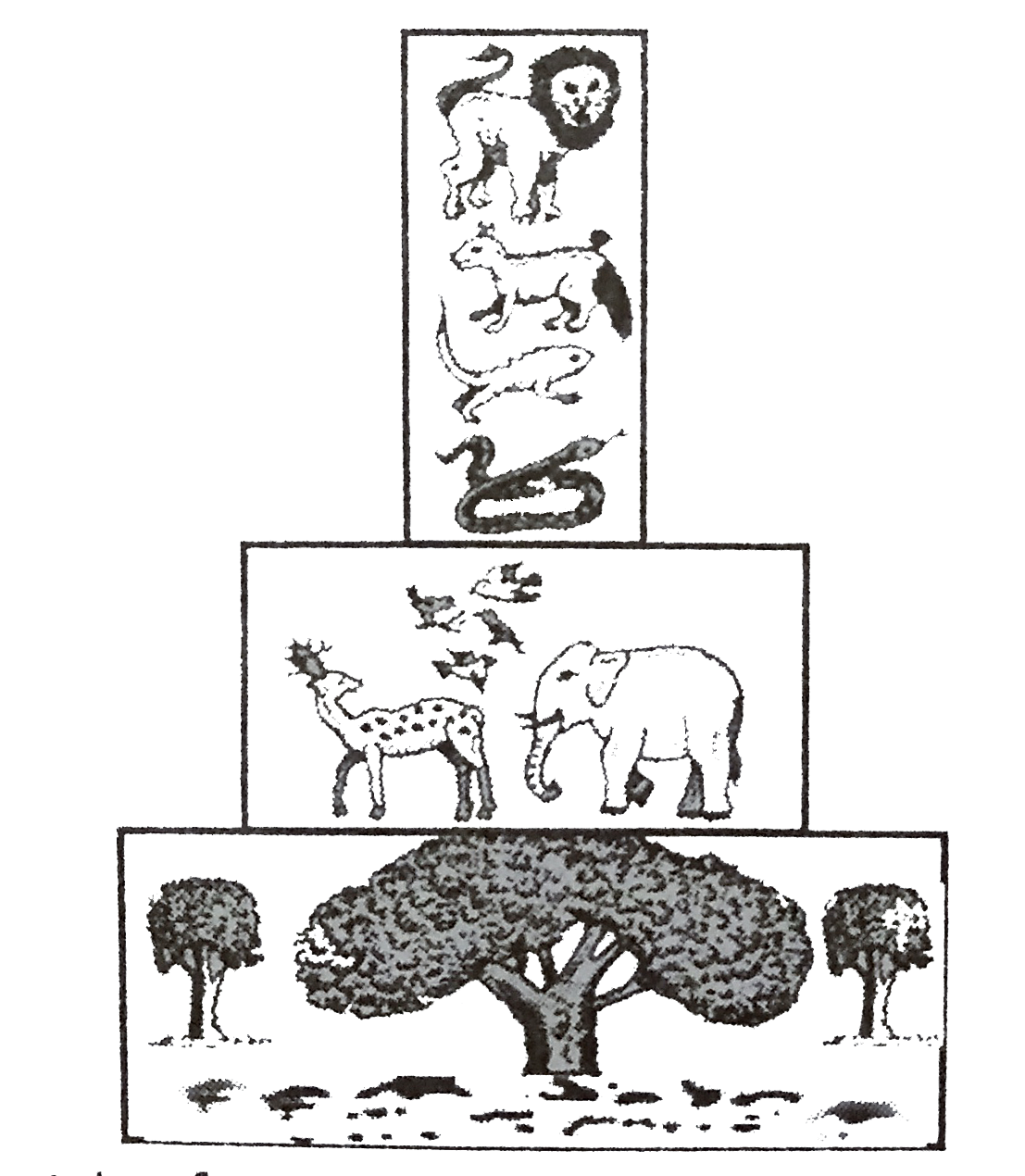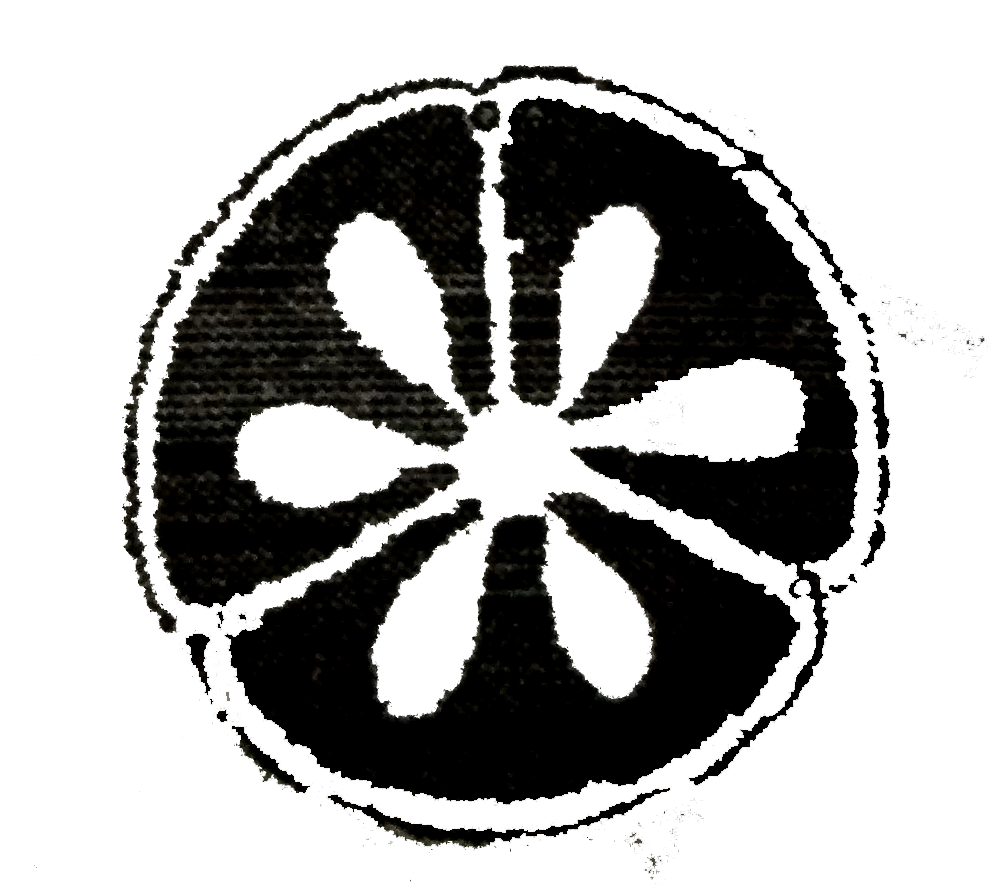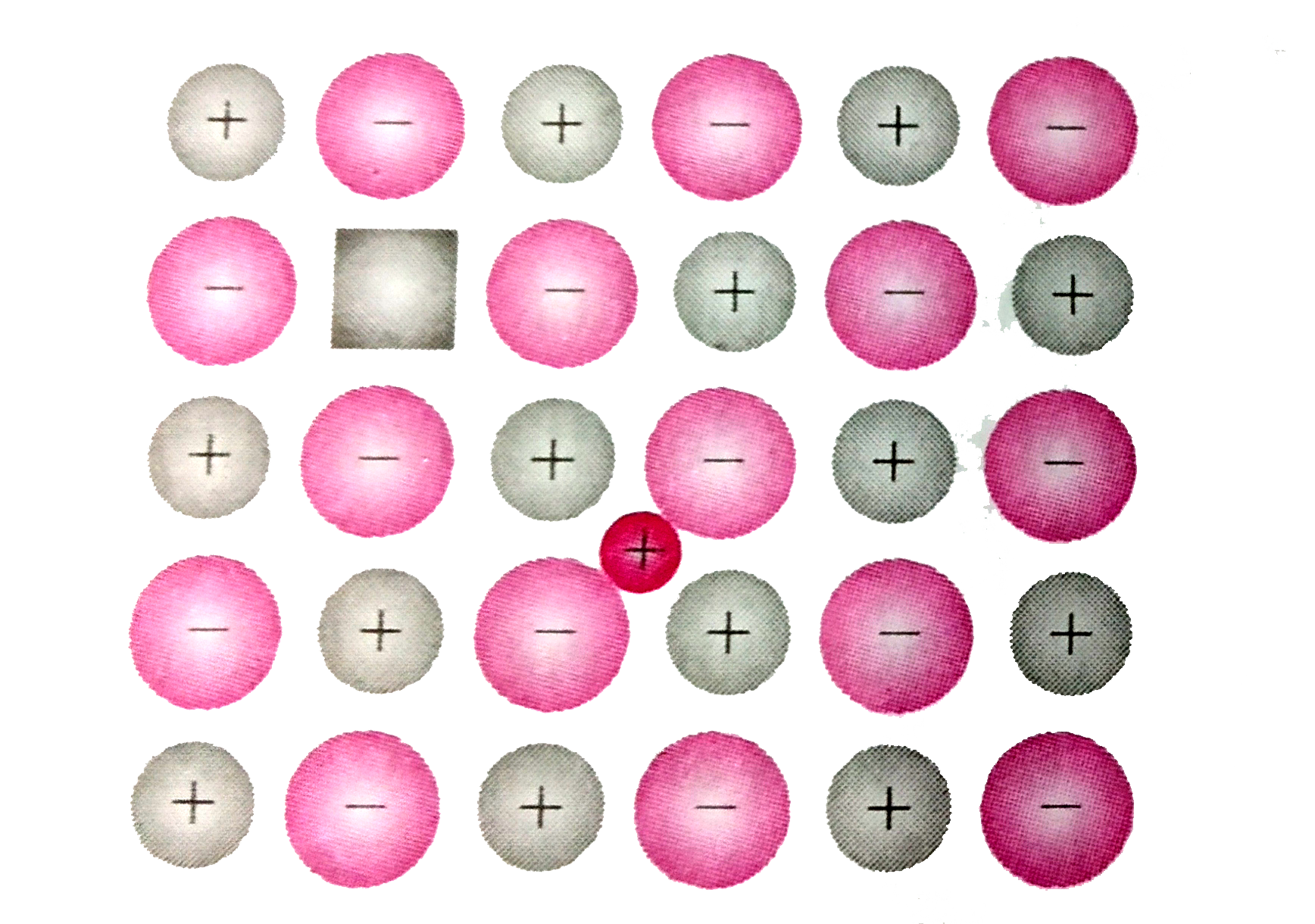Which kind of pyramid is represented by the given figure?

Inverted pyramid of numbers
Inverted pyramid of biomass
Inverted pyramid of energy
Both a and b
The correct Answer is:A
The given pyramid is pyramid of numbers in a parasitic food chain. In a parasitic food chain, the pyramid of numbers is inverted. This is due to the fact that a single plant may support the growth of may herbivores and each herbivore in turn may provide nutrition to several parasites, which in turn support many hyper-parasites. Thus, from the producer towards consumers, the number of organism gradually increase, making the pyramid inverted in shape.
Related Playlists
- BOOK - NCERT FINGERTPS ENGLISHCHAPTER - ECOSYSTEMEXERCISE - Ecosystem140videos
ECOSYSTEM
- BOOK - NCERT FINGERTPS ENGLISHCHAPTER - BIOTECHNOLOGY AND ITS APPLICATIONEXERCISE - Biotechnology And Its Application137videos
BIOTECHNOLOGY AND ITS APPLICATION
- BOOK - NCERT FINGERTPS ENGLISHCHAPTER - ENVIRONMENTAL ISSUESEXERCISE - Environmental Issues142videos
ENVIRONMENTAL ISSUES
Similar Questions
What kind of pyramid is represented by the given figure?
 View Solution
View SolutionWhich kind of the pyramid is represented by the given figure
 View Solution
View SolutionWhat kind pyramid is represented by the given figure ?
https://haygot.s3.amazonaws.com/questions/929221_4dbe11c723cb43258136cd29db69b611.pngView SolutionWhich kind of placentation is represented by the given figure ?
 View Solution
View SolutionWhich group of organisms is represented by the given figure?
 View Solution
View SolutionWhich animal and phylum is represented in the given figure?
 View Solution
View SolutionWhich type of interaction is represented by the given figure ?
 View Solution
View SolutionWhich is the defect represented by the given figure ?
 View Solution
View SolutionThe given pyramid best represents
 View Solution
View SolutionA population in which number of pre-reproductive individuals is very large, number of reproductive individuals is moderate while post-reproductive individuals are fewer. Which kind of age pyramid is represented by such a population ?
View Solution


